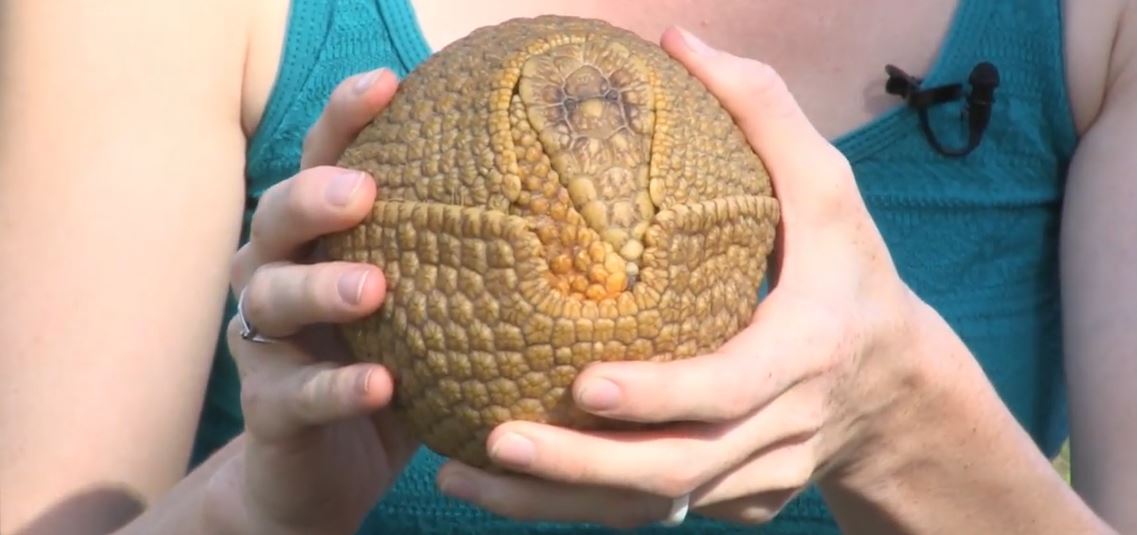Armadillo Trapping: How To Trap An Armadillo

Do you have unwanted armadillos on your property? Would you like to know how to get rid of them? No need to get out the shotgun or call animal control. You can capture and relocate the pesky creatures yourself. Here are a few tips on how to do that.
Understanding Armadillo Behavior
A major factor in learning to trap an armadillo is to learn how they think. Armadillos are nocturnal animals—they are active at night. They have poor eyesight, which causes them to bump into things. They burrow underground tunnels in which they make their homes. They also burrow a number of other tunnels that they use for escape routes. They will share their tunnels with other armadillos, too. They eat worms and grubs, which they root around in the ground to find.
One quirky armadillo behavior is that they will only eat food for which they have foraged. They will not eat anything they find lying on the ground. This makes trapping them a little more tricky, as there is nothing you can use to bait a trap. So how do you go about catching an armadillo?
Traps
A live trap is one of the primary ways to catch an armadillo. A wire cage that has some type of trip device that makes the door automatically shut when the armadillo enters the cage works just fine. A cage that will fit a raccoon will work for an armadillo, too.
Another type of armadillo trap is a wooden one. The wooden trap, when used over and over again, retains the scent of the captured armadillo, and thereby attracts another one the next time it's set. Armadillos have a highly acute sense of smell. They use that sense not only to find food but also to find other ‘dillos. When an armadillo catches the scent of another one emanating from your trap, it will head right into it, thinking it's found a friend.
You may discover that a certain location is ideal for your trap. When that happens, just keep the trap there. Some people have had traps in the same location for years. Just be sure to check the trap every morning! You wouldn't want to trap a ‘dillo, then forget and leave it in the trap to starve to death.
Placement Of The Trap
Knowing where to place the trap is a key factor to successfully trapping armadillos. Study the yard or other area where the armadillo is known to be. Armadillos use the same path over and over again. Armadillos are creatures of habit and will walk the same route around your property. They also tend to walk next to a wall, which makes a logical place to set the trap. When you have defined the path, you will know where to place the trap.
Sometimes it may be necessary to use guides, such as lengths of wood, laid out to funnel the armadillo toward the trap. A temporary construction-type fence may also be helpful to ensure the ‘dillo does not miss the trap.
Another good location to set the trap is on the path to the ‘dillo's home tunnel. Then as it is heading home, the armadillo will walk right into your trap instead. You may find it necessary to lay a brick or something else heavy on top of the trap to keep it from being overturned.
Bait
As mentioned above, there is really no bait that will attract an armadillo. They root around in the dirt for the grubs and worms that they relish, ignoring food lying on top of the ground. If you choose to put bait in your trap, you will most likely catch some other critter—a raccoon, squirrel, skunk, or the neighbor's cat.
Relocation Of The Armadillo
So you've been lucky enough to catch the pesky little creature that's been burrowing in your yard and garden, making a general nuisance of itself. Now, what are you going to do with it? In some states, there are rules about the relocation of armadillos. Originally from Central America, they are not a native species, so in some places have regulations to protect the ecosystem.
Take the armadillo in the trap and put it in your car's trunk or in the back of your pickup. Take the armadillo at least five miles from your home. Ten miles is even better. Pay attention to your surroundings and don't release the animal in town, an urban area, or anywhere that it will become a nuisance to someone else.
Professional Wildlife Controller
If you decide that you'd rather not deal with a trap yourself, or maybe you are physically unable to handle it, there are professional wildlife controllers whom you may call to hire to do the job for you.
Armadillo
Read the How to get rid of armadillos page for helpful information and to learn more about Armadillo Trapping: How To Trap An Armadillo

